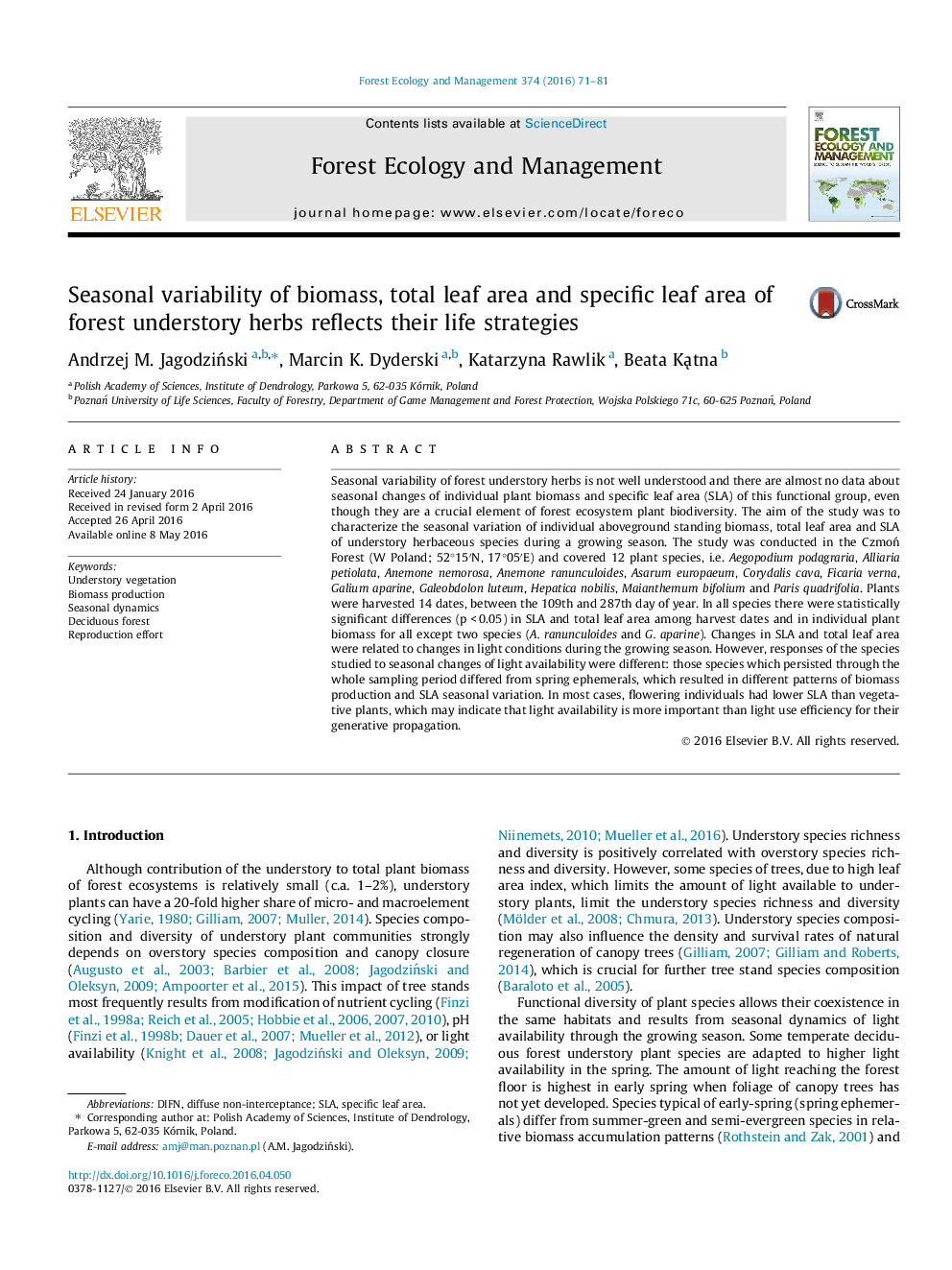| Article ID | Journal | Published Year | Pages | File Type |
|---|---|---|---|---|
| 85891 | Forest Ecology and Management | 2016 | 11 Pages |
•Seasonal variability of forest understory herbs is poorly understood.•We studied total and specific leaf area (SLA) and biomass of 12 forest herb species.•SLA and total leaf area were related to light conditions during the growing season.•Spring ephemerals differed in patterns of seasonal variation in biomass and SLA.•In most cases, flowering individuals had lower SLA than vegetative ones.
Seasonal variability of forest understory herbs is not well understood and there are almost no data about seasonal changes of individual plant biomass and specific leaf area (SLA) of this functional group, even though they are a crucial element of forest ecosystem plant biodiversity. The aim of the study was to characterize the seasonal variation of individual aboveground standing biomass, total leaf area and SLA of understory herbaceous species during a growing season. The study was conducted in the Czmoń Forest (W Poland; 52°15′N, 17°05′E) and covered 12 plant species, i.e. Aegopodium podagraria, Alliaria petiolata, Anemone nemorosa, Anemone ranunculoides, Asarum europaeum, Corydalis cava, Ficaria verna, Galium aparine, Galeobdolon luteum, Hepatica nobilis, Maianthemum bifolium and Paris quadrifolia. Plants were harvested 14 dates, between the 109th and 287th day of year. In all species there were statistically significant differences (p < 0.05) in SLA and total leaf area among harvest dates and in individual plant biomass for all except two species (A. ranunculoides and G. aparine). Changes in SLA and total leaf area were related to changes in light conditions during the growing season. However, responses of the species studied to seasonal changes of light availability were different: those species which persisted through the whole sampling period differed from spring ephemerals, which resulted in different patterns of biomass production and SLA seasonal variation. In most cases, flowering individuals had lower SLA than vegetative plants, which may indicate that light availability is more important than light use efficiency for their generative propagation.
